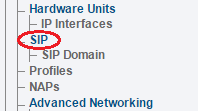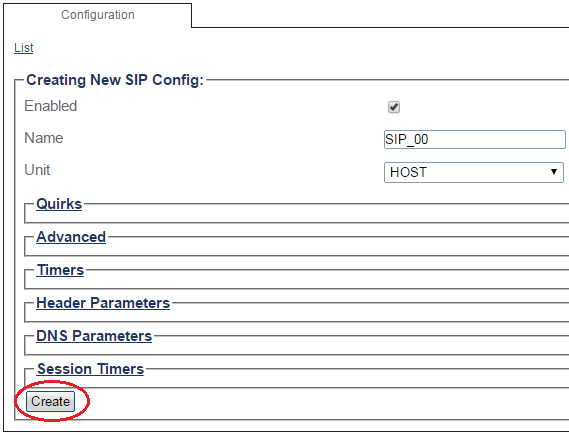Toolpack:Creating a SIP Stack SBC A
From TBwiki
(Difference between revisions)
(fix collapse section name) |
|||
| (One intermediate revision by one user not shown) | |||
| Line 1: | Line 1: | ||
| − | |||
{{DISPLAYTITLE:Creating a SIP Stack}} | {{DISPLAYTITLE:Creating a SIP Stack}} | ||
| + | |||
| + | {| class="wikitable" | ||
| + | |- | ||
| + | |rowspan="3"|This article applies to: | ||
| + | |'''Product''' | ||
| + | |'''Version''' | ||
| + | |- | ||
| + | |SBC | ||
| + | |3.0, 3.1 | ||
| + | |} | ||
Session Initiation Protocol, more commonly known as [[SIP]], is a signaling protocol for packet-based networks and is commonly used, along with H.323 to provide signaling for Voice over IP (VoIP) communications. | Session Initiation Protocol, more commonly known as [[SIP]], is a signaling protocol for packet-based networks and is commonly used, along with H.323 to provide signaling for Voice over IP (VoIP) communications. | ||
You must configure SIP signaling for your system. The first step in doing so is to create a SIP stack: | You must configure SIP signaling for your system. The first step in doing so is to create a SIP stack: | ||
Latest revision as of 09:51, 29 December 2020
| This article applies to: | Product | Version |
| SBC | 3.0, 3.1 |
Session Initiation Protocol, more commonly known as SIP, is a signaling protocol for packet-based networks and is commonly used, along with H.323 to provide signaling for Voice over IP (VoIP) communications. You must configure SIP signaling for your system. The first step in doing so is to create a SIP stack:
1- Click SIP in the navigation panel
2- Click Create New Sip
3- Create the new SIP stack:
- Verify that the box labeled Enabled is checked
- Enter a name for the stack
- Click Create
4- Verify that the "SipCfg was successfully created" message appears
List of Parameters


